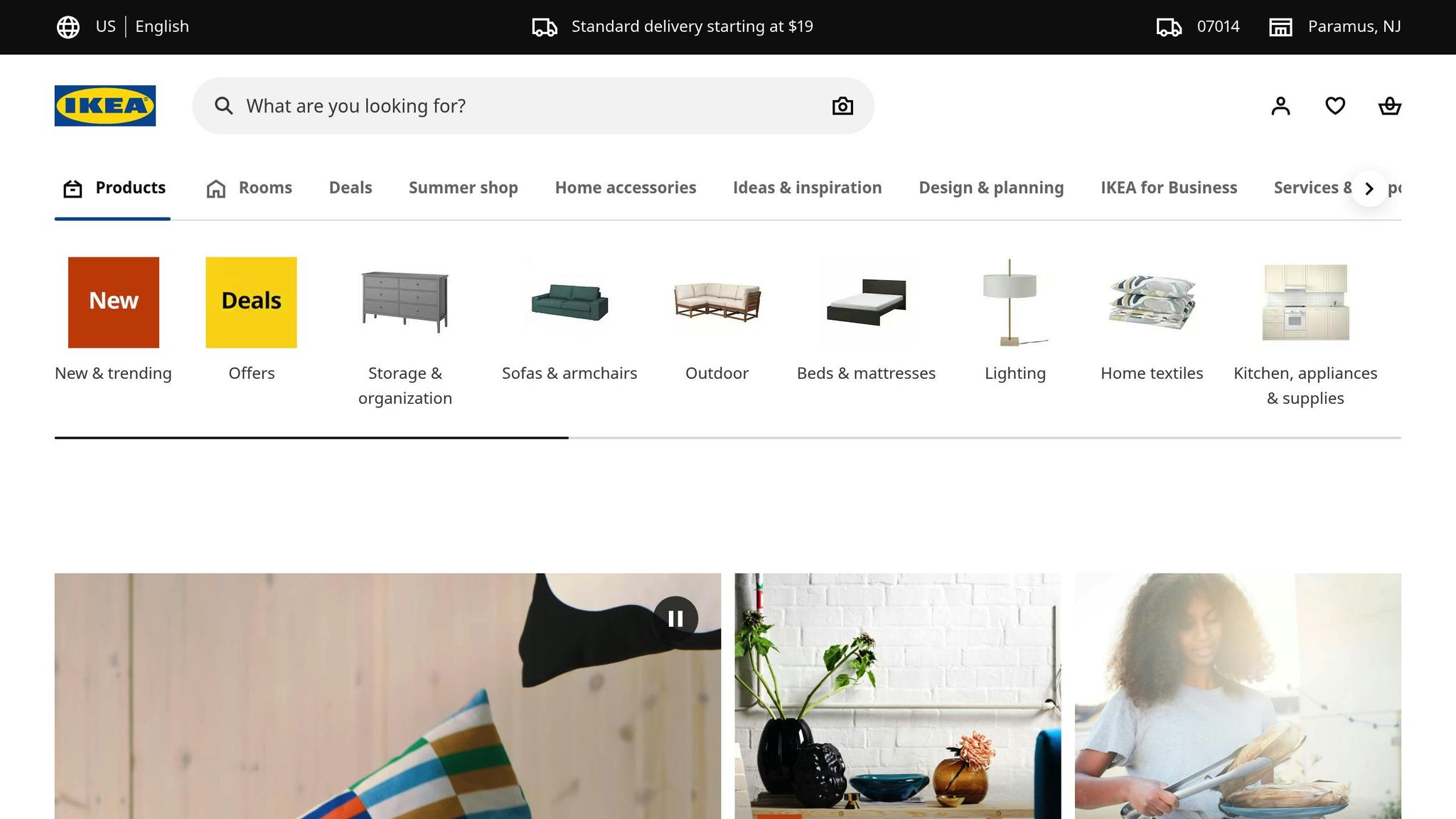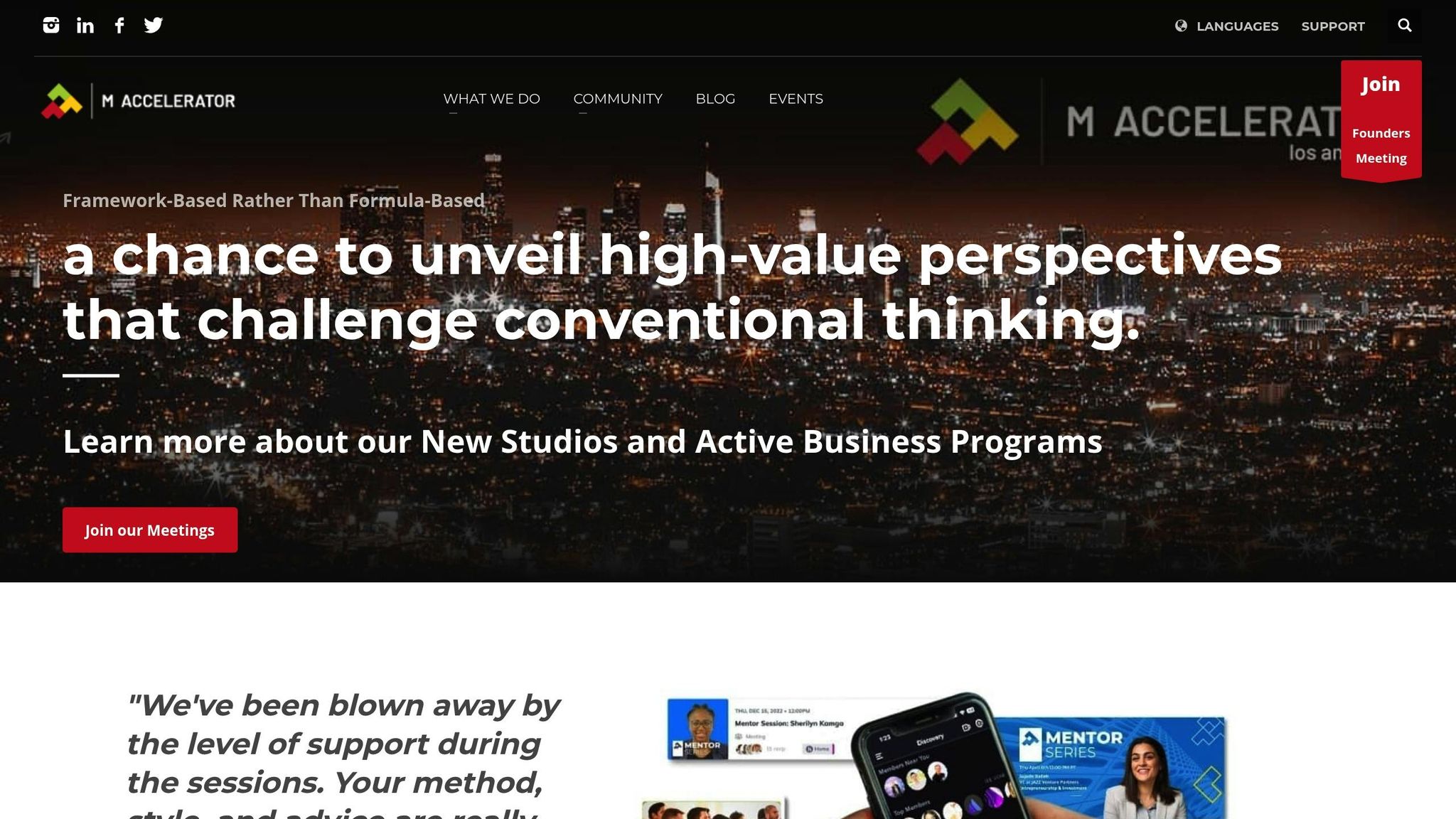Co-creation is changing how businesses work together. Companies, customers, and partners collaborate to innovate and share value. But how do you measure its success? Here’s a quick breakdown:
- Key Metrics:
- Quantitative: Revenue growth, cost savings, market share.
- Qualitative: Partner satisfaction, innovation quality, knowledge sharing.
- Long-term Value: Ecosystem health, competitive advantage, scalability.
- Popular Frameworks:
- Ecosystem Health Scorecard: Tracks retention, resource use, and innovation.
- Value Creation Index: Measures revenue, cost savings, and brand value.
- Strategic Impact Assessment: Focuses on market expansion and partnership strength.
- Challenges & Solutions:
- Attribution Issues: Use multi-touch models for accuracy.
- Data Overload: Simplify with hybrid scoring systems.
- Real-time Tracking: Leverage digital dashboards for consistency.
Examples like IKEA, Unilever, and Liebherr show how tailored metrics can drive results. Whether you’re a startup or a major company, combining numbers with feedback is key to understanding co-creation’s impact.
Value Creation and Value Capture in Business Ecosystems
Core Metrics for Co-Creation Success
Evaluating the success of co-creation efforts requires a mix of hard data and qualitative insights to get a full picture of how an ecosystem is performing.
Numbers vs. Feedback Analysis
Here are some key quantitative metrics to track:
| Metric Type | Examples | How Often to Measure |
|---|---|---|
| Financial | Revenue growth, cost savings, ROI | Monthly/Quarterly |
| Engagement | Partner participation, active contributors | Weekly/Monthly |
| Output | Number of innovations, speed of implementation | Quarterly |
| Market Impact | Market share gains, customer adoption rates | Quarterly/Annually |
To complement these numbers, qualitative feedback focuses on areas like partner satisfaction, the quality of relationships, knowledge exchange, innovation opportunities, and how well strategies align.
"We’ve been blown away by the level of support during the sessions. Your method, style, and advice are really wonderful."
By combining these approaches, businesses can establish consistent ways to measure and understand the impact of their ecosystem.
Standard Measurement Methods
To make sense of the data and insights, many companies use established frameworks. Here are three widely used methods:
1. Ecosystem Health Scorecard
This scorecard evaluates the overall health of the ecosystem by looking at factors like:
- Partner retention rates
- Efficiency in resource use
- Strength of the innovation pipeline
- Market responsiveness
- Satisfaction among stakeholders
2. Value Creation Index
This index measures the tangible and intangible value generated, including:
- Revenue directly tied to co-creation
- Cost savings from shared resources
- Knowledge assets developed
- Multiplier effects within the network
- Gains in brand value
3. Strategic Impact Assessment
This assessment focuses on the broader, long-term effects of co-creation, such as:
- Enhancements in competitive positioning
- Opportunities for market expansion
- Strengthened innovation capabilities
- Robustness of partnerships
- Future growth opportunities
"M Accelerator is a great starting point for anyone who is considering taking the leap to start a company. It provides mentorship, support from the community, and networking opportunities."
3 Companies Measuring Co-Creation Impact
Tracking the results of co-creation can be tricky, often requiring customized methods. Here are three examples of companies using different strategies to measure the impact of their co-creation efforts.
Liebherr‘s Digital Innovation Tracking

Liebherr uses a digital platform to monitor and assess co-creation efforts. This system highlights how technology can streamline and evaluate collaborative innovation processes effectively.
IKEA‘s Customer Feedback Integration

IKEA integrates customer feedback into its product development process using a mix of digital tools and in-person input. This blend of methods helps improve products while showing the value of combining analytics with direct customer interaction.
Unilever‘s Stakeholder-Centric Metrics

Unilever takes a broader approach by focusing on stakeholder value through three main areas:
- Partnership Value Creation: Measuring the benefits gained from collaborations.
- Ecosystem Health: Evaluating engagement levels and satisfaction.
- Sustainable Impact: Assessing contributions to environmental and social goals.
These examples show how different industries tailor their measurement strategies to fit their specific co-creation goals. Each approach highlights the importance of finding the right tools and metrics for the job.
sbb-itb-32a2de3
Measurement Obstacles and Solutions
Main Measurement Difficulties
Measuring the impact of co-creation can be tough. In fact, 68% of companies face challenges connecting outcomes directly to co-creation activities. This is largely due to the complexity of collaboration and the involvement of multiple stakeholders.
One major issue is tracking too many metrics. When organizations monitor too many KPIs, it leads to data overload and confusion. For instance, Unilever struggled to align sustainability metrics across more than 300 suppliers, making it harder to identify meaningful insights.
Another common challenge is distinguishing which results come from co-creation versus internal processes. Philips Healthcare tackled this by implementing a system to monitor 112 engagement metrics and 18 outcome indicators. This approach achieved an 89% accuracy rate in attributing product improvements to co-creation efforts.
To address these challenges, companies are adopting focused strategies that simplify and improve measurement processes.
Problem-Solving Methods
Industry leaders have developed specific solutions to overcome these measurement hurdles. Here’s how they tackle the key challenges:
| Measurement Challenge | Solution Implemented | Improved Outcomes |
|---|---|---|
| Attribution Accuracy | Multi-touch Attribution Models | 37% reduction in misattribution |
| Data Overload | Hybrid Scoring Systems | 42% increase in stakeholder satisfaction |
| Real-time Monitoring | Digital Dashboards | 92% data consistency rate |
For example, IBM’s Innovation Jam program (2020–2022) used a Shapley Value attribution model to analyze contributions from over 150,000 participants. This method reduced misattribution by 37%.
Some companies combine numbers with qualitative insights for a well-rounded evaluation. IKEA uses a hybrid system that balances quantitative design metrics (60%) with sentiment analysis from co-creator forums (40%). This approach has cut down on "metric myopia" by 28%.
Real-time monitoring tools are also making a difference. During the COVID-19 pandemic, the SHIFFT Project maintained 92% data consistency, even amid disruptions, by using digital dashboards [5].
For organizations just starting to measure co-creation, these examples highlight the importance of choosing tools and methods tailored to their specific needs. By focusing on strategies that simplify data collection and improve accuracy, businesses can achieve more reliable and actionable results.
Startup Measurement Guide
Choosing Startup-Specific Metrics
For startups aiming to grow through collaboration, setting clear goals from the start is key. During the early stages, especially before achieving product-market fit, structured customer interviews can provide quick, qualitative insights. As the business matures, startups can gradually add quantitative metrics to monitor partner involvement and ecosystem performance.
These foundational steps pave the way for practical tools like those provided by M Accelerator.
M Accelerator‘s Measurement Tools

M Accelerator helps startups track co-creation efforts effectively, without overwhelming them with unnecessary data. The focus is on actionable strategies that deliver results.
"have been blown away by the level of support during the MA Startup Program. Your method, style, and advice are really wonderful."
This approach played a role in Fertility Circle securing $800,000 in funding in 2021, showcasing how focused measurement and execution can lead to measurable outcomes.
The M Accelerator framework emphasizes three main areas:
- Strategic Alignment
Tailor co-creation metrics to match business goals using custom dashboards and tracking tools. - Stakeholder Engagement
Use tools to measure partner participation and the value they bring. For instance, Tora Tora Travel grew to a team of 12 employees by 2024 through strategic partnerships. - Impact Assessment
Focus on metrics that indicate progress toward product-market fit and long-term growth.
Start with the basics and expand your metrics as your network grows.
Conclusion
Measuring co-creation effectively requires a mix of numbers and meaningful feedback. This combination helps businesses apply insights across various models and stages.
Take Whip Music Africa as an example. The company improved its approach by leveraging strategic frameworks. Melissa Kariuki shared in 2019:
"After this startup program, I have a lot more clarity in which direction we should take, which tools we can use, and how we can go about it"
Key factors for success include:
- Metrics tailored to the business’s current stage
- A blend of qualitative and quantitative data
- Regular input from stakeholders
- A focus on insights that lead to action
Real-world cases show how structured measurement can lead to practical results. This shift reflects a move from traditional metrics to more integrated systems.
Looking ahead, future frameworks should focus on creating actionable insights rather than sticking to rigid formulas. As businesses work more collaboratively, the goal will be to find metrics that not only promote growth but also build strong partnerships.
M Accelerator exemplifies this approach, helping startup founders move from ideas to scalable solutions. The takeaway? A flexible and balanced framework is essential for unlocking the true potential of co-creation.
FAQs
How can businesses measure co-creation success using both quantitative metrics and qualitative feedback?
To effectively measure co-creation success, businesses should strike a balance between quantitative metrics and qualitative feedback. Quantitative metrics, such as revenue growth, customer retention rates, or the number of new partnerships, provide clear, measurable insights into the impact of co-creation efforts. On the other hand, qualitative feedback – like customer testimonials, stakeholder interviews, or team reflections – offers a deeper understanding of the experiences and perceptions driving those results.
Combining these approaches ensures a more comprehensive evaluation. For instance, while metrics can highlight trends or outcomes, qualitative feedback can explain why those trends are occurring, helping businesses refine their strategies for future co-creation initiatives. By integrating both data types, companies can better assess the value they bring to their ecosystems and foster stronger relationships with collaborators.
What challenges do businesses face when measuring co-creation in ecosystems, and how can they address them?
Measuring the impact of co-creation in business ecosystems can be challenging due to factors like defining clear metrics, aligning goals across stakeholders, and tracking long-term outcomes. Without clear benchmarks, it can be difficult to assess the value that co-creation brings to the ecosystem.
To address these challenges, businesses can start by establishing specific, measurable goals for co-creation efforts. Collaborating with all stakeholders to define success criteria ensures alignment and transparency. Additionally, leveraging tools and frameworks to track both qualitative and quantitative outcomes can provide a more comprehensive view of the impact. Regularly reviewing and refining these metrics helps businesses adapt to changes and sustain long-term value creation.
How can businesses use frameworks like the Ecosystem Health Scorecard and Value Creation Index to measure the success of co-creation efforts?
Frameworks like the Ecosystem Health Scorecard and Value Creation Index provide structured approaches to evaluate co-creation initiatives within business ecosystems. These tools help businesses track key metrics such as collaboration effectiveness, resource sharing, and mutual value creation among ecosystem participants.
By using these frameworks, businesses can identify areas of improvement, measure the tangible and intangible benefits of co-creation, and align their efforts with long-term growth strategies. This ensures that co-creation not only drives innovation but also enhances the overall health and sustainability of their ecosystem.